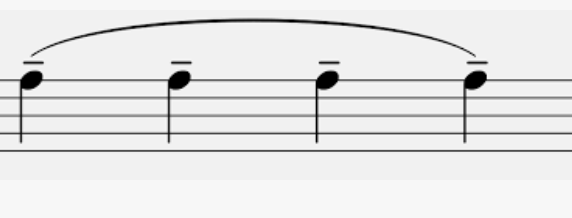Learn Violin Online with Online Violin Teacher Meghan Faw Lesson 11/15: Bowing Techniques
In today’s lesson, you’ll learn three of the most common beginner bowing techniques. This is by no means a comprehensive list of all bowing techniques, just a few of the ones that you’re most likely to encounter in beginner pieces. Check out this comprehensive list of violin bow strokes.
The first thing we’ll cover is bow direction. There are two bow directions on the violin: down bows and up bows. Downbows typically start in the lower half of the bow (closer to the frog), and you can think of it as moving your hand down towards the ground. Unless otherwise noted, all songs should start downbow.
Down bow symbol
Up bows typically start in the upper half of the bow (closer to the tip), and you can think of it as moving your hand. up towards the ceiling.
Following the bow markings of a piece is extremely important. If you’ve ever seen an orchestra play, you might have noticed that all their bows were going the same way! And even if your goal is not to play in an orchestra one day, bowings have an incredible impact on the style and character of the piece.
Our first bowing technique is detache. Detache is smooth bowing, changing bow direction on each note. All the bowing we have done up to this point has been detache. Detache does not require any special marking: if the notes do not have any markings on them they should be played detache.
The second bowing technique is staccato. Staccato simply means short and separated. Staccato can be done in any part of the bow and with any amount of bow, however it’s mostly done in the middle of the bow and with about an inch or two of bow. Staccato is notated by dots over and under the notes.
Staccato
The final bowing technique is slurs. Slurs indicate that the notes underneath should be played in the same bow direction and should be played legato, or smoothly.
You may encounter slurs with dots or dashes over the notes. This indicates that all of the notes should be going the same bow direction but there should be space between them.






